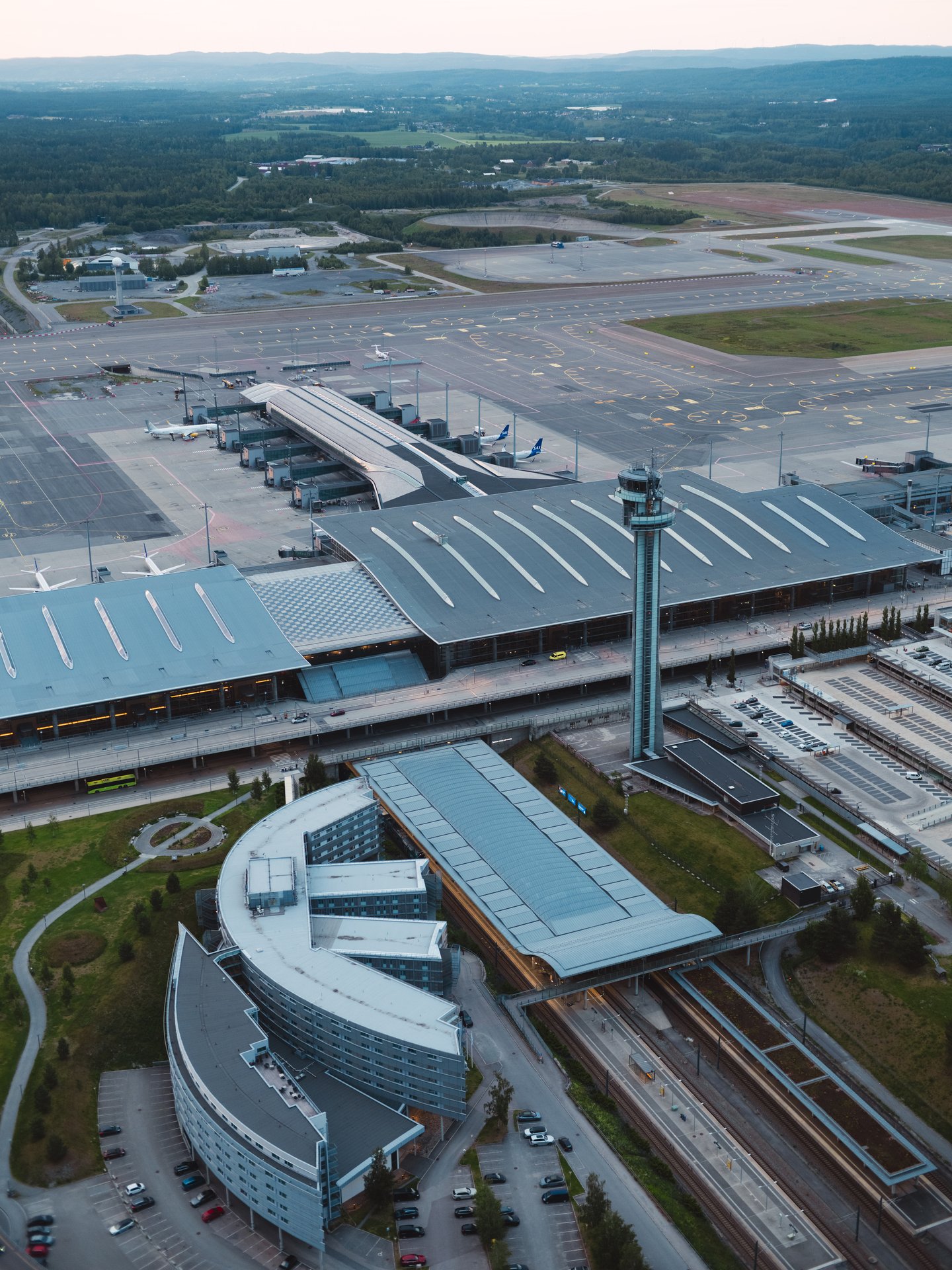Crane Permit and Registration
All use of cranes at and within a radius of 5 km from Oslo Airport must be notified to and approved by Avinor.

How to Notify
Fill out the crane notification form and send it to APOC Infrastructure by email no later than 20 business days before the lifting operation. A shorter deadline may be accepted in special cases.
Information about regulations for reporting, registration, and marking of aviation obstacles can be found on The Civil Aviation Authority's website.
Avinor employees
Avinor employees and contractors with access to Avinor's intranet are referred to procedure IN01474 Airside safety - Crane notification in the SMART management system for information the application process.
Assessment
- In the airport certificate issued by the Civil Aviation Authority, Avinor is obliged to ensure that no obstacles penetrate the obstacle limitation surfaces specified in EASA Certification Specifications and Guidance Material for Aerodrome Design (CS-ADR-DSN) Chapter H — Obstacle Limitation Surfaces.
- The extent of the obstacle limitation surfaces varies depending on the length of the runway and the approach systems used. The main surfaces for Oslo Airport are:
- The Transitional surface: This starts 140 meters from the runway centerline and rises at 14.3% (1:7) until it intersects the horizontal surface at 253 meters above sea level. The height of the starting point is the height of the nearest point on the runway centerline.
- The Inner horizontal surface: A large surface at 253 meters above sea level over the airport with a radius of 4 km. 60 m out from each landing threshold.
- Approach surface: Begins 60 m from the landing threshold and rises at 2% (1:50).
- The Take-off climb surface: Begins 60 m from the end of the runway (at Oslo Airport, the runway end coincides with the landing threshold) and rises at 2% (1:50). However, at the southern end of the eastern runway, the take-off climb surface begins 400 m south of the runway end due to.
- The obstacle surfaces outlined for Oslo Airport can be found here (you can disregard the surfaces related to the third runway regarding temporary crane usage, but not permanent structures).
- Based on the crane application, Avinor will make an assessment of whether the planned crane activities penetrates the aircraft's approach and departure procedures.
- A crane will almost always cause "interference" with ground radar systems as radar beams are reflected by metal surfaces. The concern with ground radar is primarily false radar detections, i.e., radar reflections from the crane that appear, for example, on the runway. This can cause alarms in the control tower and is very problematic during low visibility operations as the air traffic controller cannot visually confirm whether there is an actual object on the runway or just a false radar detection.
- Cranes lifting large objects can also cause radar shadows, which is undesirable during poor weather conditions.
- Avinor makes an assessment to see if the crane conflicts with the restricted areas specified in Regulation on Air Navigation Services (BSL G 6-1). If there is a conflict, a request will be sent to Avinor Air Traffic Safety Technical Center in Asker for simulation to see if crane use can still be permitted with certain reservations. Such a simulation is paid for by the developer.
- The restricted areas for the air navigation equipment at Oslo Airport are outlined here (you may of course disregard the surfaces associated with the third runway concerning temporary crane use – though not permanent structures).
If the requested crane usage is deemed to be in conflict with at least one of the above factors, Avinor will strive to propose a solution to still allow the lift to proceed. This could include:
- Using a smaller crane
- Using a different type of crane
- Applying for an exemption from the Civil Aviation Authority
- Conducting the lift during nighttime after coordination with Oslo Airport
- Implementing mitigating measures